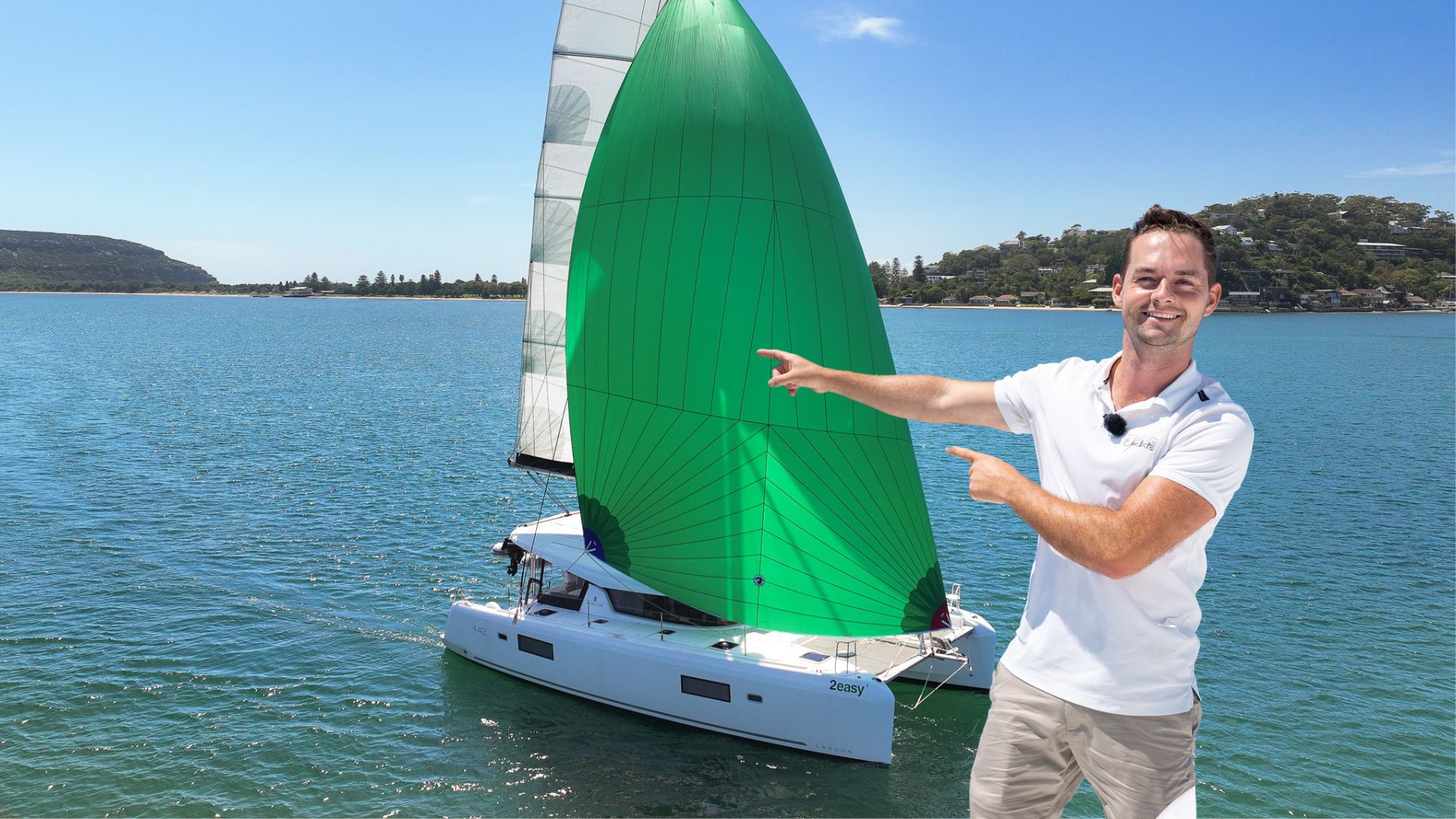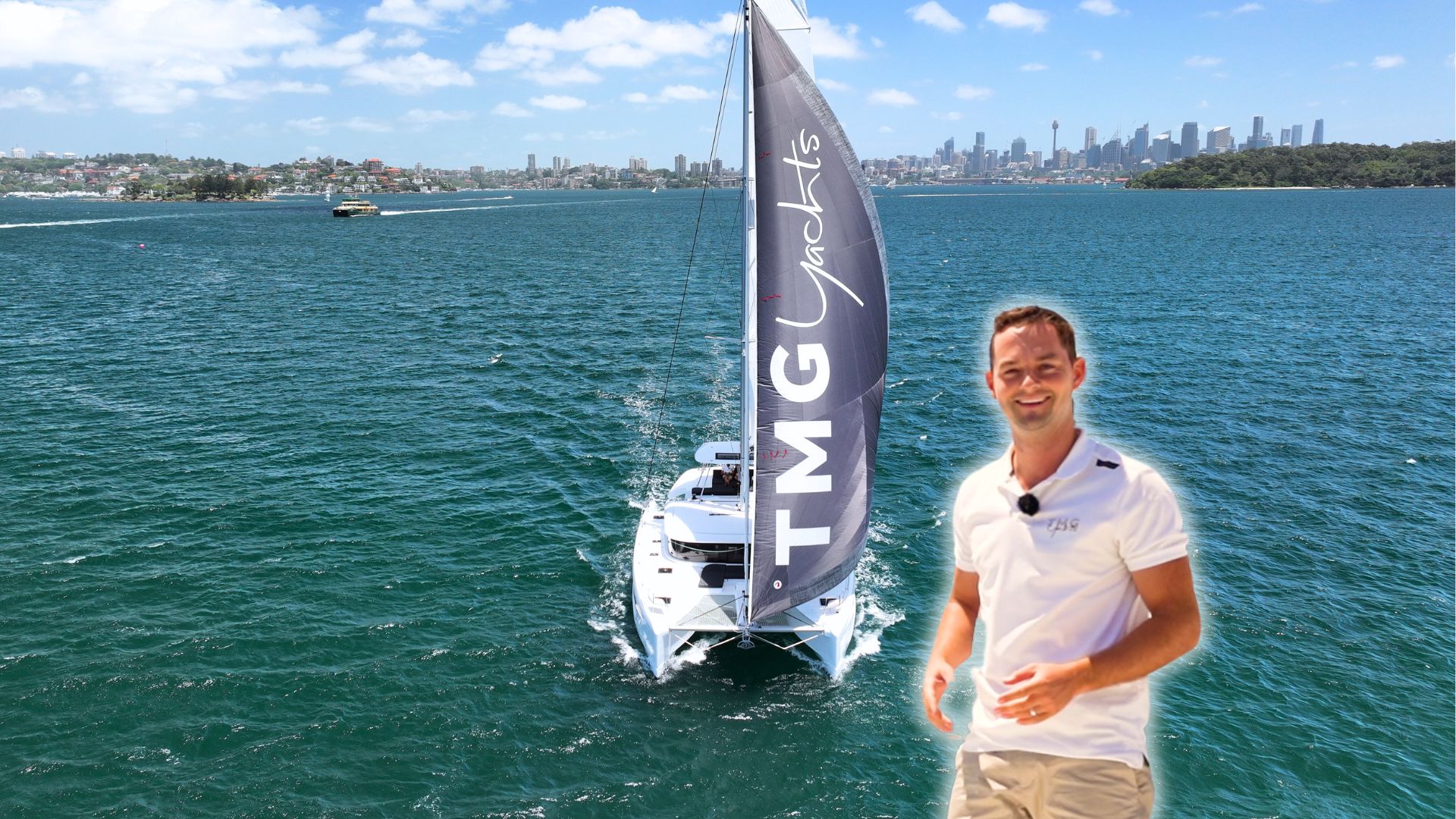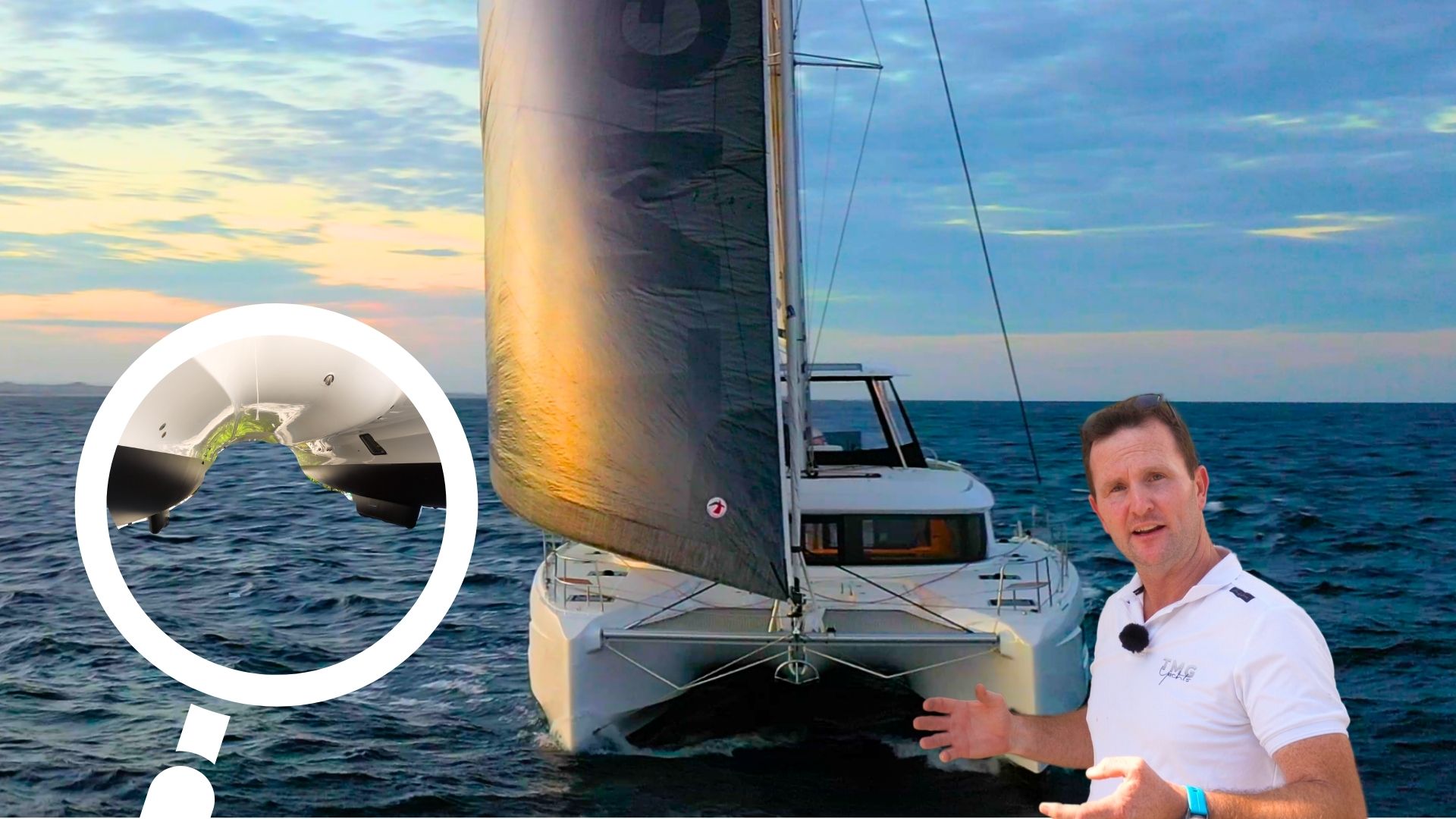Lagoon Catamarans’ NEW Furling Boom System – Inspire & Learn Technical Feature
Interview with Designer & First Look
In the world of sailing, innovation is key to enhancing the sailing experience and making it more accessible for everyone. We’re excited to introduce you to a groundbreaking development in the world of catamarans – Lagoon Catamarans’ new furling boom system. This innovative feature has just been announced, and it’s generating a buzz of excitement among sailing enthusiasts. This blog post will delve into the details of this exciting development, featuring an interview with the mastermind behind the project, Bruno Belmont, Lagoon Catamarans’ multihull expert.
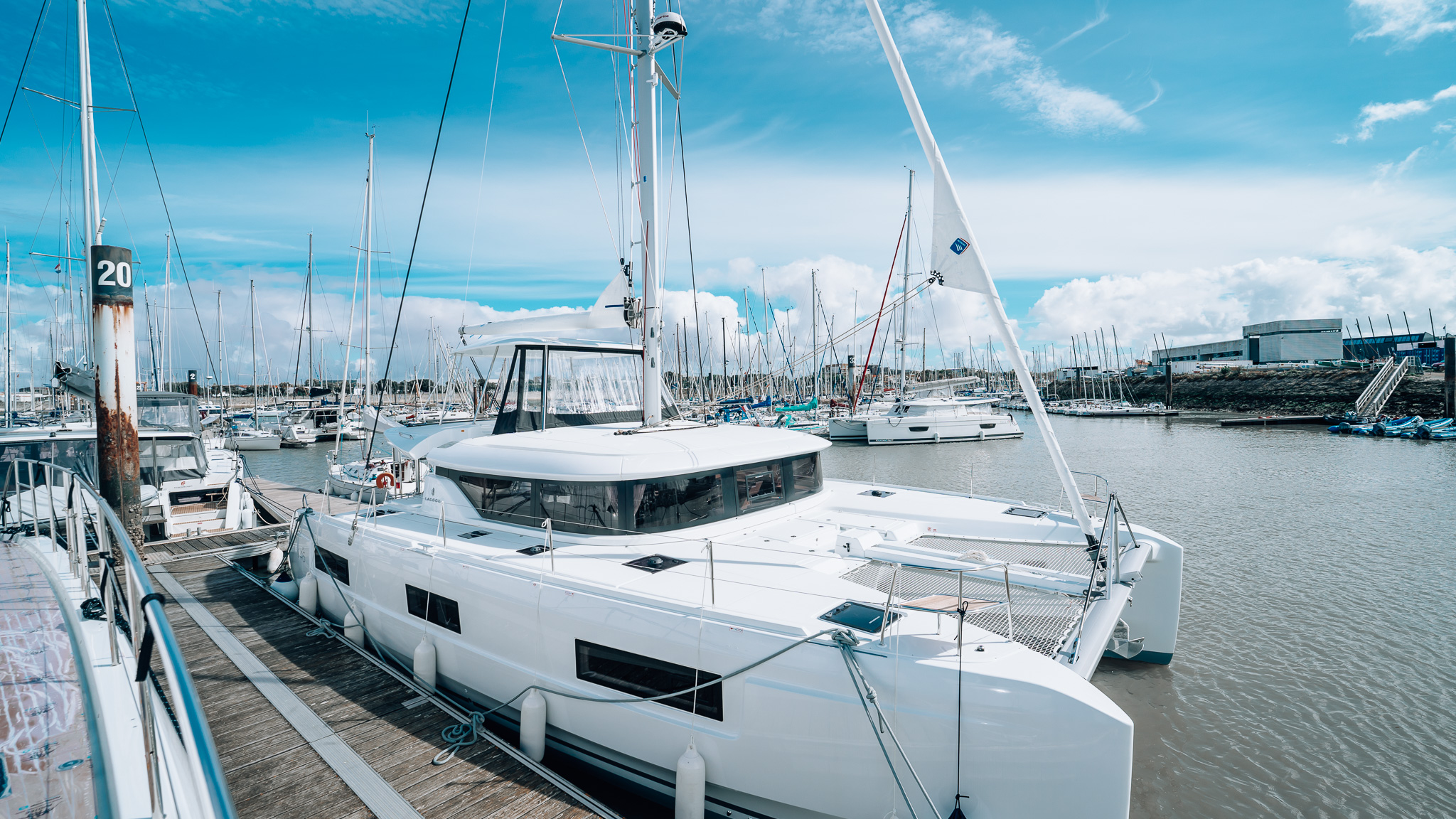
Process of Developing the First Furling Boom for a Catamaran
The journey towards the creation of the Furling Boom System has been a long and collaborative one. According to Bruno Belmont, “The project started 12 years ago. We did the first set of prototypes which failed. So, we restarted five and a half years ago with fresh ideas and we started building efficient prototypes three years ago that we’ve been field testing since.” This dedication to perfecting the system demonstrates Lagoon’s commitment to innovation.
But it wasn’t just Lagoon working in isolation. Bruno highlights, “We were not alone, we had a big team. Sparcraft was one of the main helpers, and Incidences Sails was also in the team, as well as Facnor.” This collaborative effort involving industry giants showcases the determination to bring something truly remarkable to the market.
Why Has This Never Been Possible Before?
The uniqueness of Lagoon’s Furling Boom System lies in its approach. Bruno explains, “The furling system could not be a copy of a monohull system because of the horizontal compression of the batons.” This catamaran-specific challenge required innovative thinking. Lagoon’s solution was to create a system that is not enclosed within cowling as seen on other monohull specific designs. “We wanted the sailor to look at what they’re doing and be capable of reacting in case something went wrong,” Bruno adds.
What Does the Furling System Offer?
The primary motivation behind the Furling Boom System is to simplify and improve the sailing experience on Lagoon catamarans. As Bruno explains, “Most of our sailors are first boat buyers. So they don’t have a strong experience of sailing… The idea is that the boom is quite high, and accessing the lazy bag could be viewed as difficult. Also, reefing the main can be quite challenging for new sailors.” The Furling System aims to address these challenges and make sailing more accessible, safe and user-friendly for all.
What Are the 4 Key Principles?
The Furling System relies on four key principles:
- Easing the Main Sheet Completely: The main sheet must be fully eased to allow the sail and boom to move freely so that there is no wind power in the sail.
- Boat head to wind: The boat must be head to wind to keep the boom close to the centreline of the vessel.
- Set Topping Lift: The topping lift should be hoisted to a point where it’s locked in the predetermined position so that the boom is level.
- While hoisting and lowering, tension must be applied to the ‘slack’ easing line to ensure the luff of the sail remains tight.
“By respecting these four principles, you can do it when it’s dark, windy, raining etc, and it will work. So not only does it simplify the process, but it makes it more secure to use.”
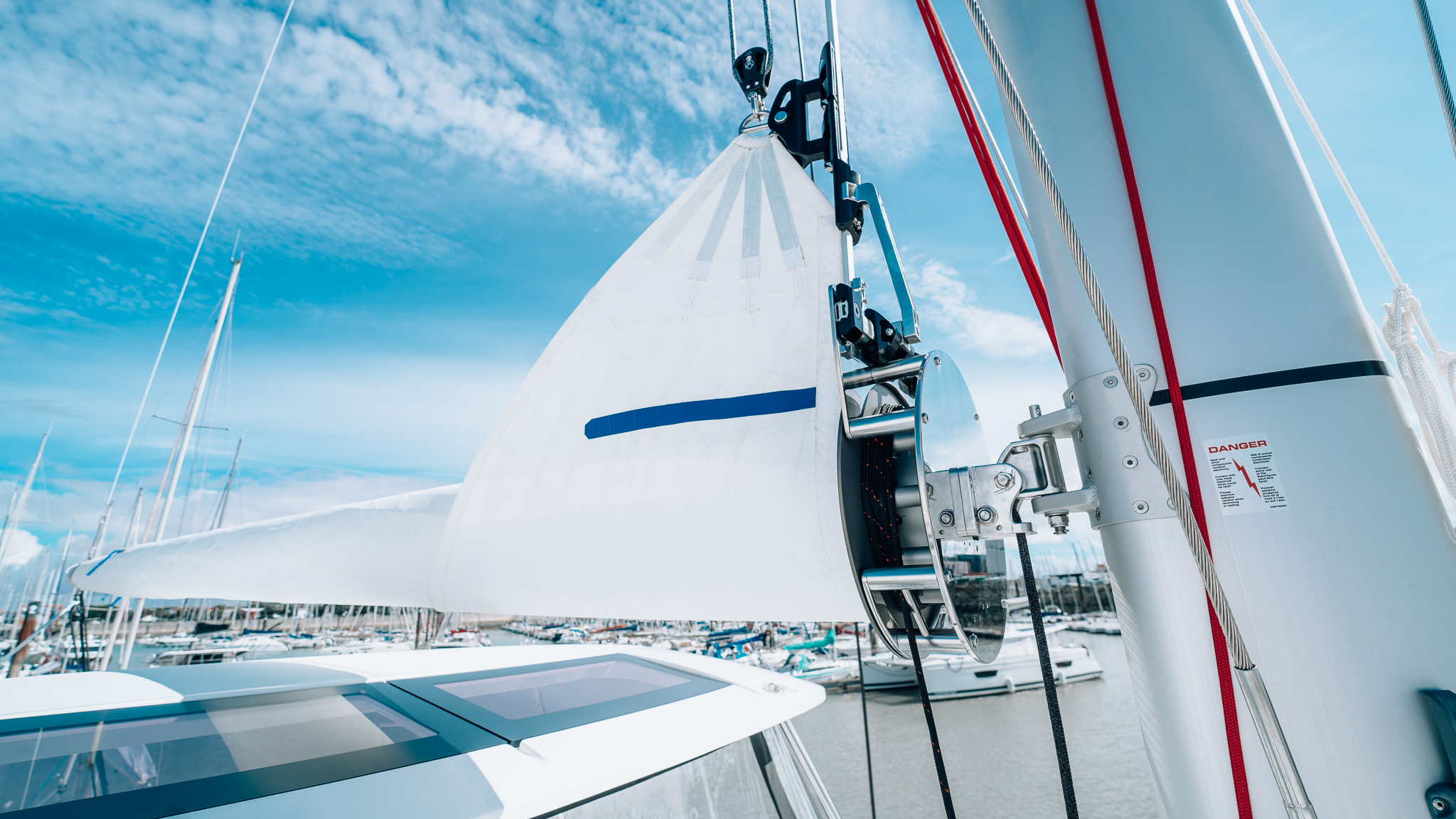
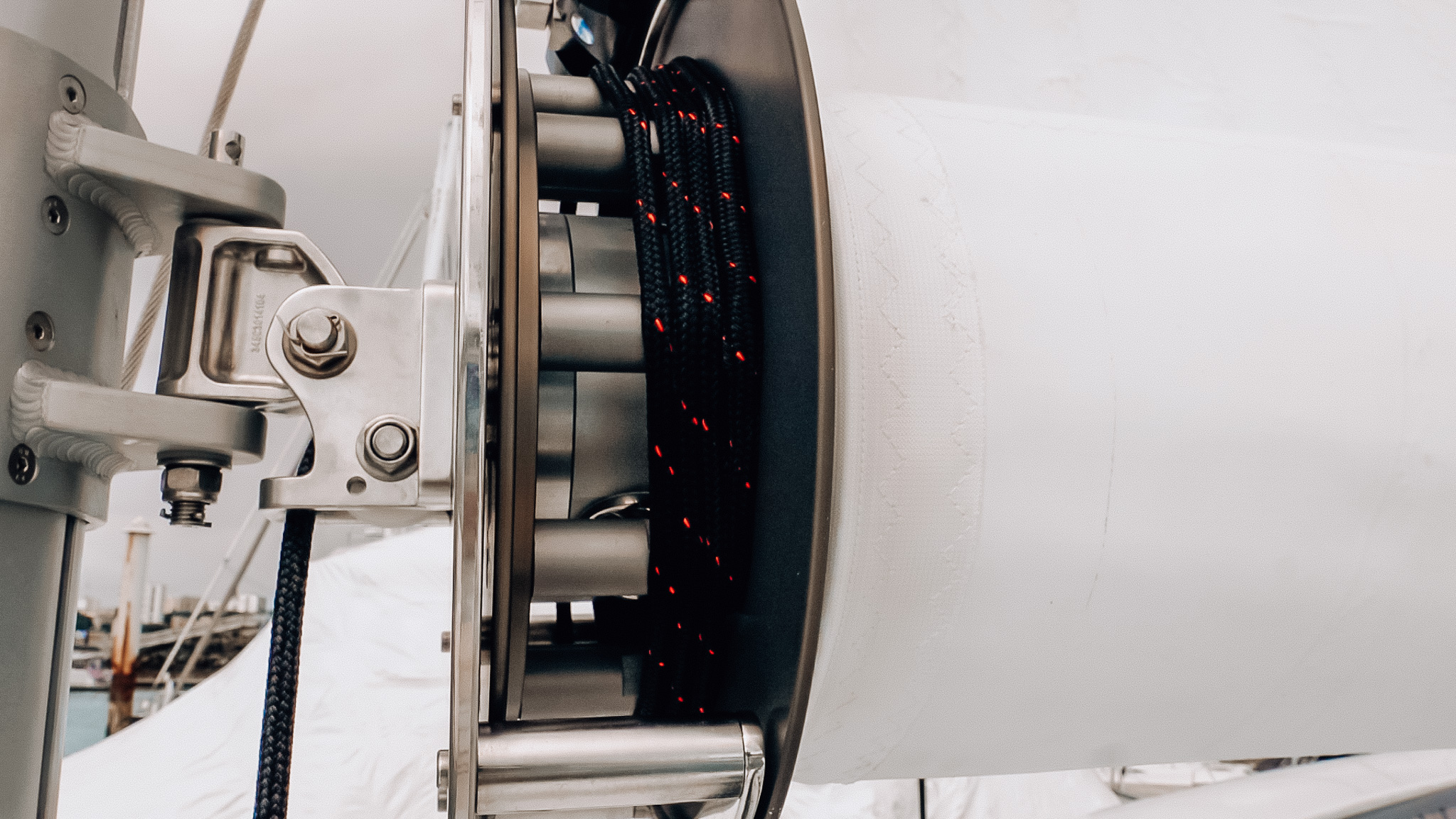
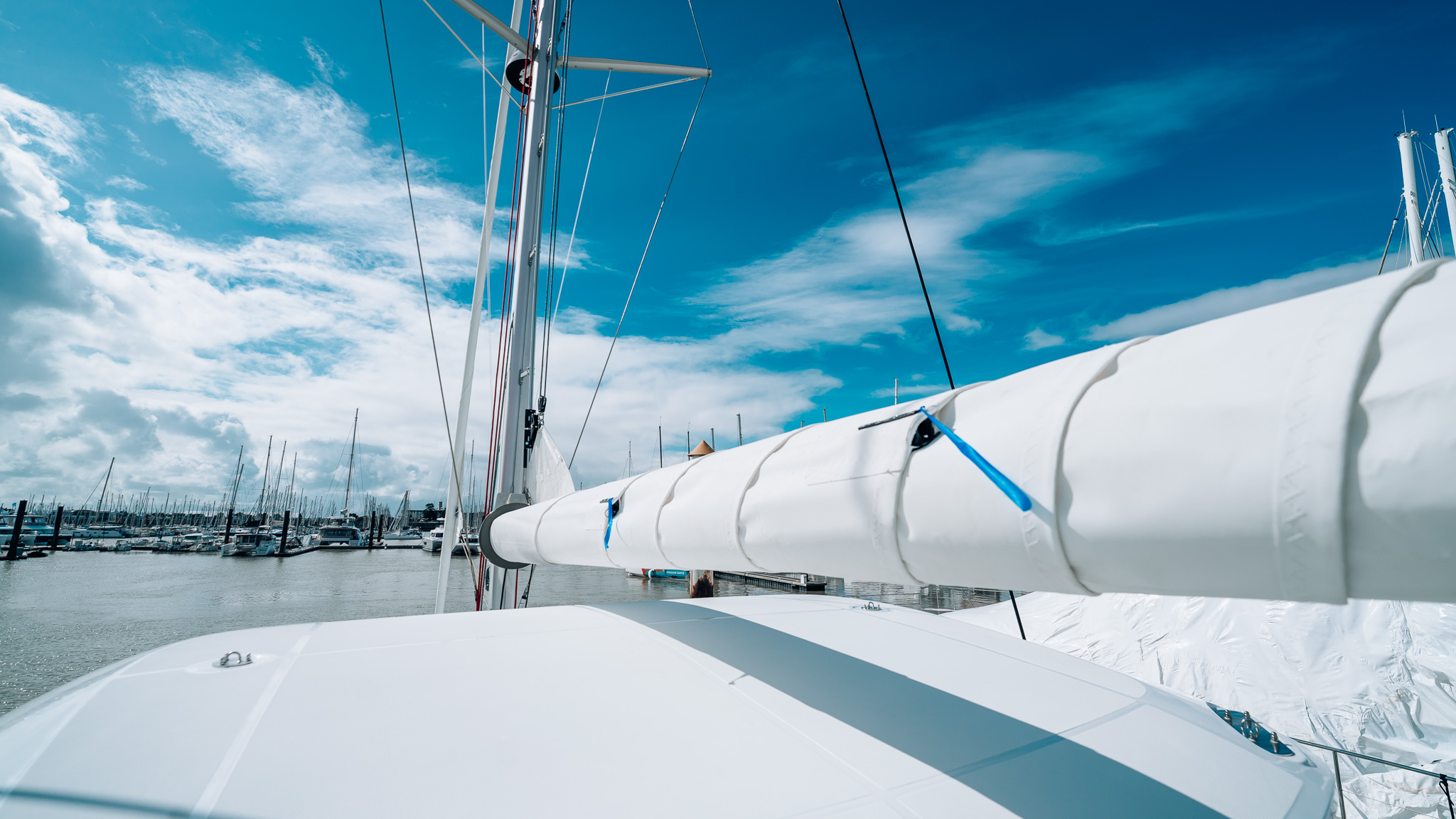
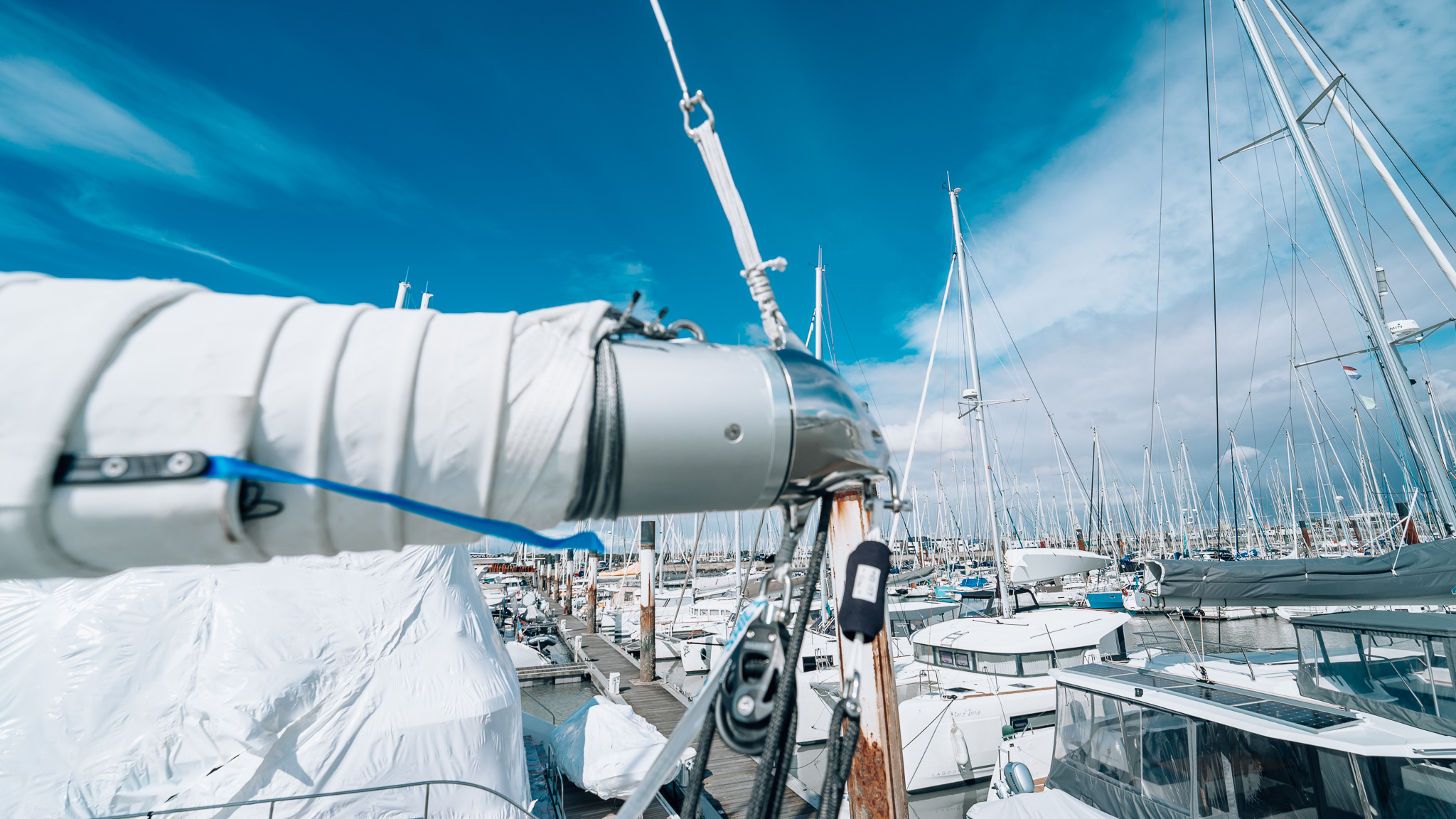
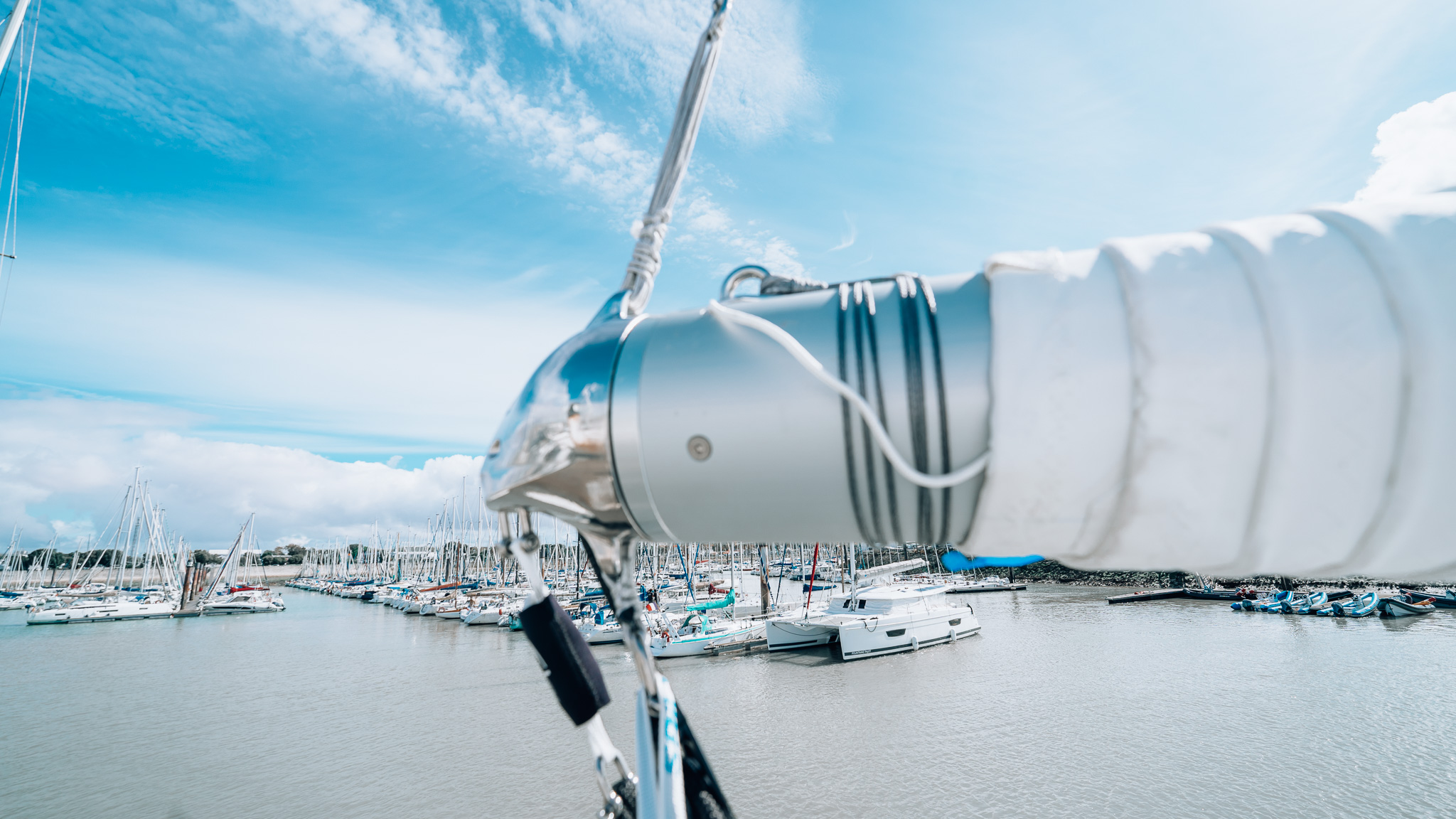
The System
Joe Fox, from TMG Yachts, made the trip to La Rochelle for an exclusive first look at Lagoon’s revolutionary Furling Boom System ahead of official client sea trials and press days. Here is an explanation of the key components of the system…
- Furling Mandrel – This is a substantial piece made of thick stainless steel, giving a solid impression of engineering quality. The boom itself has a diameter of approximately 180 millimetres and is designed to rotate to furl the sail around the boom. What makes this system truly unique is that the entire boom rotates. It has pivot bearings at the front and rear, allowing for smooth and controlled movement.
- Aft bearing – The custom stainless steel aft bearing unit features all fixing points and bearings integrated into a one-piece unit. The mainsheet is attached directly to the lower section of this, the topping lift to the top, and there are neat cutouts for the mainsheet to enter the boom as it makes its way to the mast.
- Topping Lift – It should be noted that the topping lift on this system is a steel wire to limit stretching. Once the boom height is set to the stopper, the boom will be the same height after 2 years as the day it was new. The height of the boom is essential for the successful furling of the sail.
- Not Enclosed – One notable feature is that the sail is not enclosed in a carbon fibre or fibreglass casing, as seen in some other furling systems. Lagoon opted for a design that keeps the system as simple and as visible as possible, allowing sailors to have a clear view of the operation.
The furling mechanism is controlled by 3 lines:
- Main Halyard: This line pulls the sail up.
- Furling Line: It’s connected to the mandrel at the front of the boom and is responsible for pulling the sail down while easing the halyard to furl it.
- Topping Lift: This line controls the height of the boom and ensures that the boom and the luff of the mainsail are at a 90-degree angle to each other. This is crucial to maintain the proper alignment and tension.
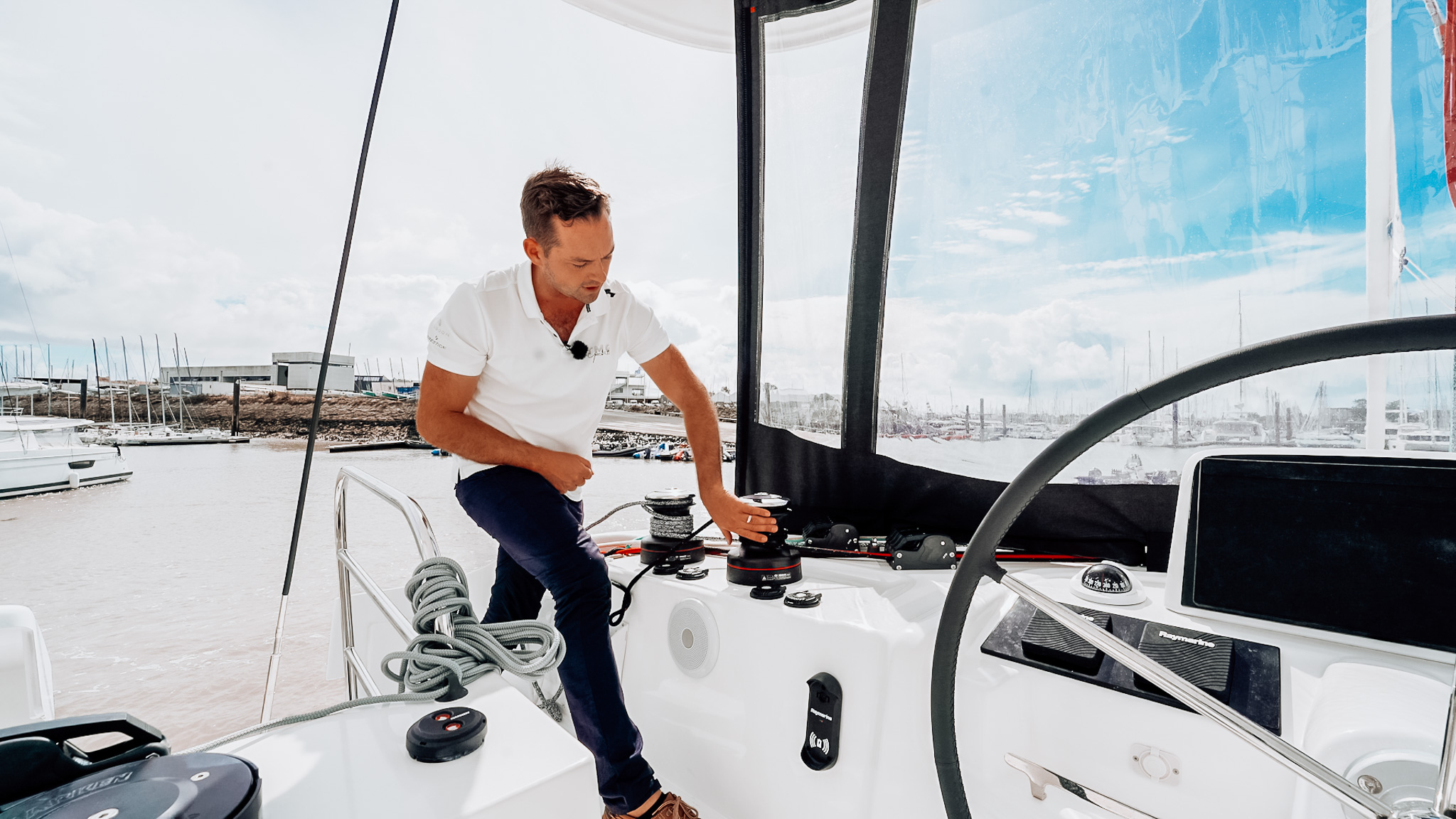
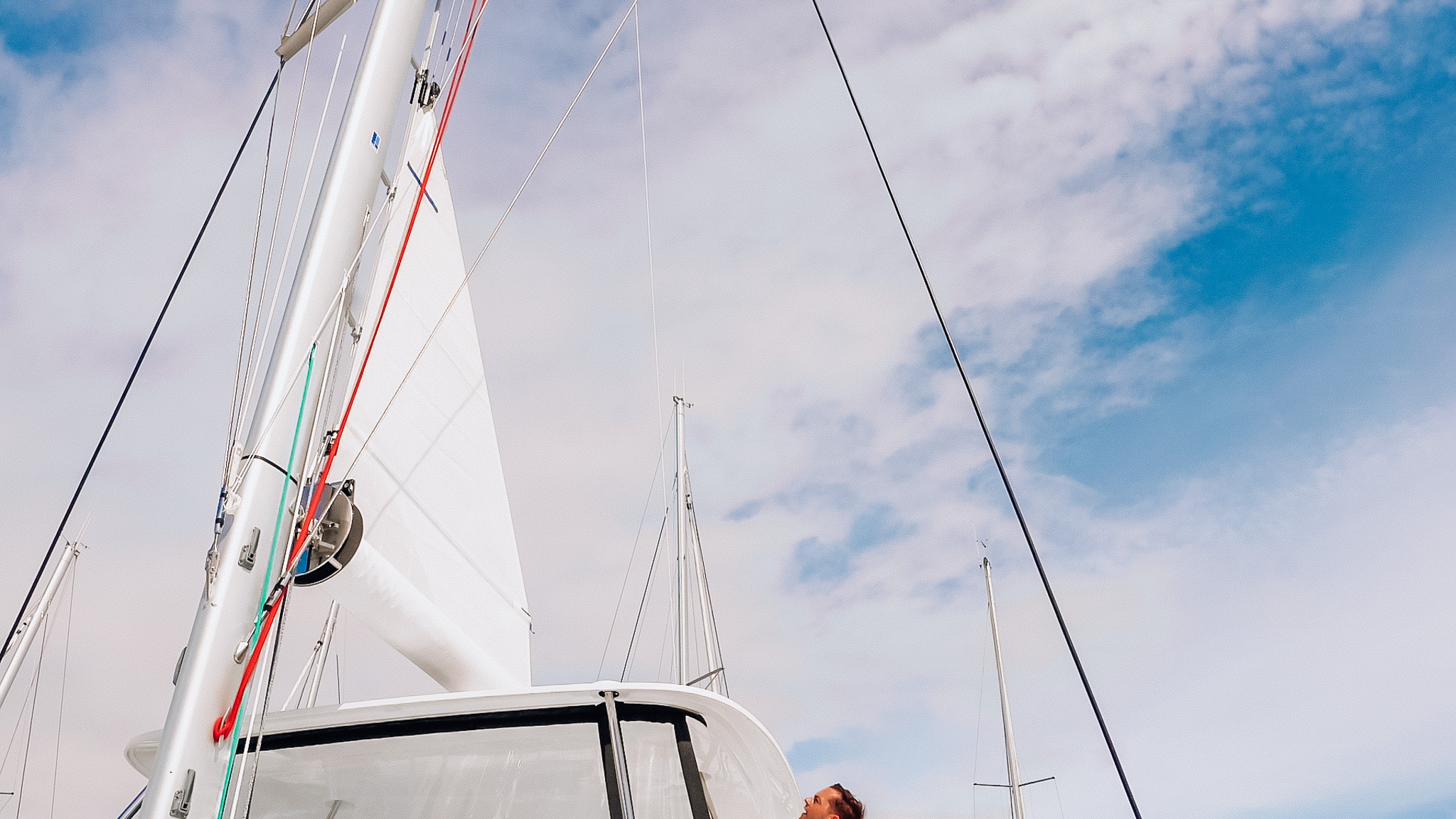
How It Works: Hoisting and Furling
Using the electric winch, Joe hoisted the sail with ease. The system’s design ensured a smooth and controlled hoisting process.
When furling away the sail, Joe demonstrated the reverse process. He locked the furling line to prevent it from slipping, then released the halyard. With the push of a button on the furling line winch, the sail smoothly and quickly furled back onto the boom.”
It is important to mention that although furling does work on the high-speed winch, it is prudent to use the slow speed for a more controlled operation. Once reefed, the sail should be stopped at a point where a batten is alongside the boom in order to maintain good luff tension when sailing.
The simplicity and efficiency of the system is easy to see; to highlight this, a single person can operate it and have a clear view of the entire process. “From the working winches, I have a clear view of the whole front section of the mainsail, so I can keep an eye on the process easily.”
This new furling system from Lagoon is a game changer in the market. This innovation marks a significant step forward for catamaran sailing and promises an even better and more accessible sailing experience for Lagoon owners.
This new furling system from Lagoon is a game changer in the market. This innovation marks a significant step forward for catamaran sailing and promises an even better and more accessible sailing experience for Lagoon owners.
For those eager to experience the benefits of Lagoon’s Furling Boom System, Lagoon Catamarans have exclusivity on this system, with the factory option available on both the Lagoon 51 and the Lagoon 46 from January 2024.
Thanks to years of research, collaboration, and innovation, this system promises to simplify and enhance the sailing experience, making it more accessible to all, especially those new to sailing. As Bruno Belmont and the team at Lagoon continue to push the boundaries of what’s possible, the future of catamaran sailing looks brighter than ever.
LATEST FROM THE INSPIRE AND LEARN SERIES
How to Fly an Asymmetric Spinnaker on a Catamaran
In this guide, we delve into the intricacies of flying a Code Zero on a catamaran, specifically the Lagoon 46. Join our expert, Joe Fox, as he walks you through the setup, preparation, and manoeuvres involved in harnessing the power of this versatile sail.
How to Fly a Code Zero on a Catamaran
In this guide, we delve into the intricacies of flying a Code Zero on a catamaran, specifically the Lagoon 46. Join our expert, Joe Fox, as he walks you through the setup, preparation, and manoeuvres involved in harnessing the power of this versatile sail.
Guide to Hull Maintenance & A Detailed Look Below the Surface
In this instructional piece, we delve beneath the waves to explore the underwater profile of the a Lagoon Catamaran. Join us as we dissect the key features and maintenance points of the Lagoon 46, offering insights into what to look for during routine upkeep.

